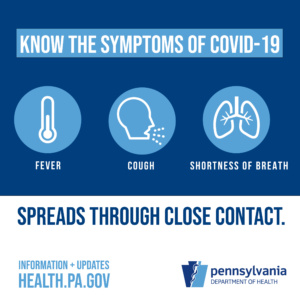3 Unusual Facts about Tornado that Hit Lancaster
(LANCASTER, PA) A tornado that snapped trees onto homes as residents slept and ripped the roof off of an industrial complex in Lancaster, Pennsylvania, this week was unusual in a number of ways, according to a National Weather Service meteorologist who investigated the storm.
“This was a bit unusual in that the timing of the tornado occurred just after midnight,” said Matt Steinbugl, an NWS meteorologist based in State College. Calls to county 911 dispatchers reportedly began coming in around 12:30 a.m. Wednesday. Peak times for severe weather in Pennsylvania usually take place during the afternoon and evening hours, according to Steinbugl.
RELATED: Tornado Causes $3-5 Million in Damages
Arriving unexpectedly after dark, the storm slipped stealthily into the area and failed to raise a red flag with NWS forecasters utilizing sophisticated technology in State College, Pennsylvania, who could have triggered a tornado warning to be issued.
“The feature in question was very subtle, a very small scale disturbance that was very hard to detect by our observing systems and our radar,” said Steinbugl. “It was certainly difficult to confidently predict that anything at all, let alone a tornado of the magnitude, even though it was only an EF-1, it’s still fairly significant tornado, that occurred from what we were looking at, at that time.”
The NWS did not issue any alerts prior to the tornado touching down, not even for the severe thunderstorm in the area.
“There were no watches in effect, there were no warnings in effect,” said Steinbugl. “Once the office got the report about the damage, we did then issue a Severe Thunderstorm Warning for portions of northeastern Lancaster County out ahead of what was remaining of that storm.”
In addition to the odd timing, the tornado cell also tracked in an unusual direction through Lancaster County, bucking the east-to-west movement typical of most weather, including the system that moved through the county.
“This feature, which was imbedded in an even smaller scale feature that produced the tornado, it actually moved from southeast to northwest, which is a bit unusual,” said Steinbugl.
“As it moved in that direction, its peak intensity occurred, from indicators we surveyed, right around where the warehouse damage occurred.” The tornado ripped the metal roof from a warehouse building housing multiple companies at 499 Running Pump Road, where it also tore a hole in the side of the building.
RELATED: Tornado Cleanup Continues
“As it crossed over Route 30 and kind of ascended up the hillside, it blew down a number of trees. The bit of the terrain feature seemed to enhance the wind a bit,” said Steinbugl.
The tornado then apparently went up a hill and lifted back up into the clouds, where it remained aloft for about the next mile or so on it’s track, until it touched down again just north of Centerville Road. According to Steinbugl, the EF-1 tornado continued on a northwest track and lifted up just prior to reaching Bowman Road.
“From where the original touchdown was, to where we found the final damage, was about 2 ½ miles,” he said. “The second damage path was about a mile. The first segment, which was the most intense segment, was about a half mile.”
While it’s not unusual for the weaker tornadoes that Pennsylvania experienced to “skip,” it is unusual for them to occur in the fall. The tornado occurred on September 30.
“Tornadoes in Pennsylvania occur mainly in the later spring and summer months,” said Steinbugl. “As weather starts to change-cooler weather, more stability in the atmosphere-we see the frequency of tornadoes drop off. To have the tornado occur later in the year was unusual. We were one day before October.”











